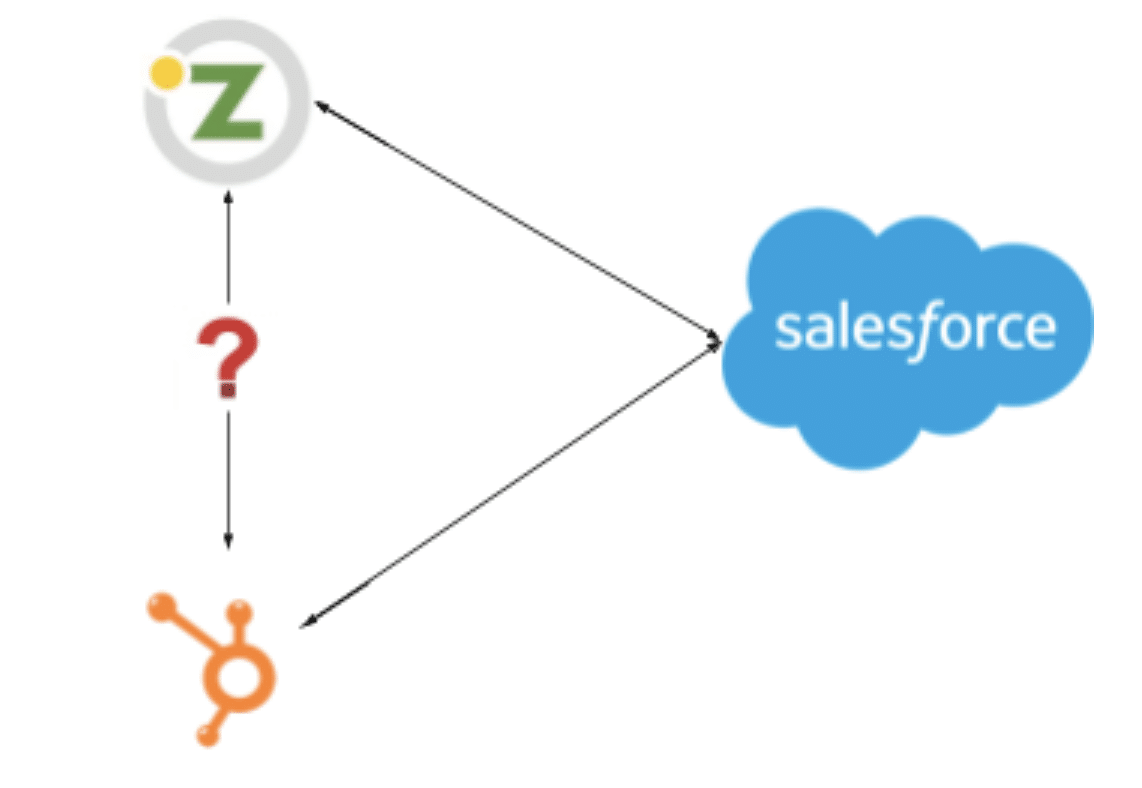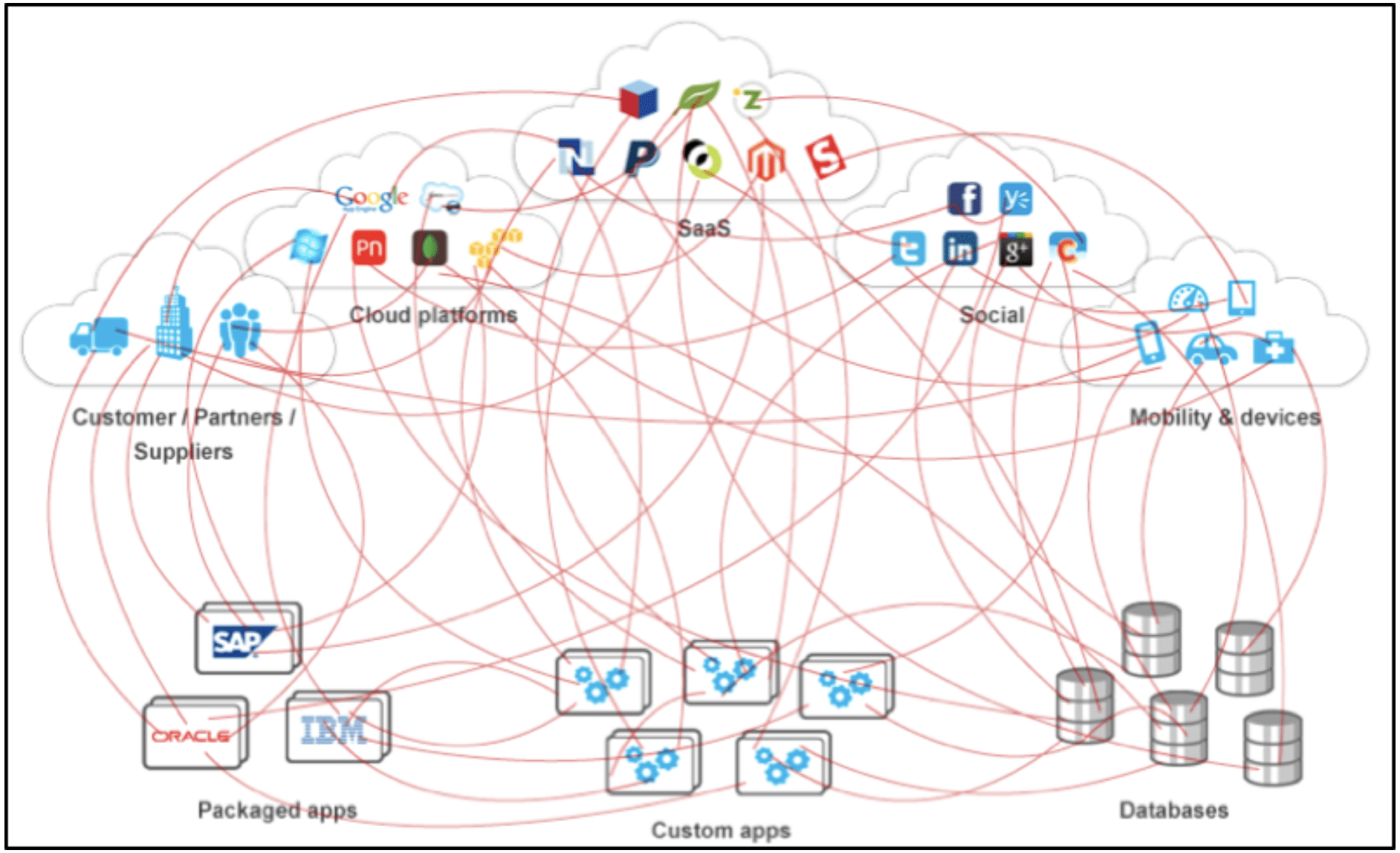Many companies buy software for creating incremental value for their business. During this customization and upgrade process, integration is often required but is an afterthought. If they move forward with an integration approach, it is usually a patchwork.
The approach taken by these organizations usually involves either using vendor-native integration capabilities or point-to-point custom integrations. Both bring long-term obstacles and roadblocks for the organization as a whole and for independent business units trying to collaborate. Let’s take a look at precisely what strategic challenges each of these common, homegrown integration approaches brings.
Vendor-Native Integrations
The best example of vendor-native integration is marketing applications connecting directly to Salesforce or other CRM products. At first sight, this is very convenient for organizations, as it involves no additional cost, includes basic features out of the box, and is easy to implement.
However, this approach often poses challenges in front of an organization that wants velocity at scale. These challenges are:
1. Out-of-the-box integrations often lack depth and flexibility.
2. Companies find themselves unable to customize their integrations (e.g., syncing your custom objects from Salesforce).
3. If there are multiple systems involved to construct the full view of the data, you may not have the option to integrate all of them. This leads to a disconnected picture of end-consumer data. For example: In the diagram below, Hubspot and Zuora have native connectivity with Salesforce, but they are not connected with each other natively. This creates a disjointed view of the data.
 4. Larger data silos. To some extent, depending on how much data can be transferred and how many use cases are covered, the integration could break down data silos between the two systems. But when it comes down to larger data sets across multiple systems, vendor-native integrations can’t connect with all the systems, creating another big data silo.
4. Larger data silos. To some extent, depending on how much data can be transferred and how many use cases are covered, the integration could break down data silos between the two systems. But when it comes down to larger data sets across multiple systems, vendor-native integrations can’t connect with all the systems, creating another big data silo.
Point-to-Point Integrations:

As can be seen from the diagram above, point-to-point connections are…
1. Increasingly complex: As your systems grow, integrations grow exponentially, making the landscape of integration extremely complex.
2. Tightly coupled: As business evolves, so do the changes and upgrades. Each application remains tightly connected to another application, making it hard to change.
3. Brittle—single point of failure: Any change made to one point-to-point interface could impact many other connections, sometimes resulting in crippling the entire customer experience and costing millions of dollars to the organizations.
4. Costly to maintain: The money to maintain spaghetti code integrations goes through the roof as the complexity increases. Additionally, the teams spend the majority of their time troubleshooting problems instead of innovating, which is critical for the success of the organization.
5. Lacking agility and speed: Since there is very little reuse of point-to-point integrations, which are developed for specific projects, there is no broader view of reuse across the lines of business. This slows down the ability of a company to quickly respond when new products or services are launched.
6. Lacking visibility and traceability: Due to custom code, there is no visibility and traceability of the business data and transactions, causing extended outages.
7. Unable to scale: As the transaction volume increases, scaling such custom integrations becomes a huge technology problem, leading to not only outages but also fixes, which usually involve either redesign or adding more servers to perform the job.
Vendor-native and point-to-point integrations are just a few of the homegrown integration solutions that fall short of complete, optimal results for most organizations’ data strategies. Join us next week, when I’ll take a look at SOAP/SOA and ESB and the challenges these data integration approaches present for companies looking to accommodate growth.














0 Comments